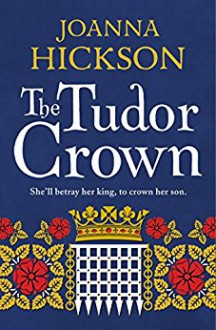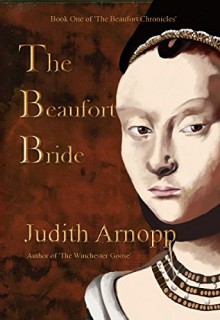
Thanks to NetGalley and to Harper Collins UK for providing me an ARC copy of this novel that I freely chose to review.
I must start by saying that although I’ve been reading more historical fiction recently, I am not an expert on the subject, and I know a bit more about other historical periods than about the rise to power of Henry VII of England. I was familiar with the bare facts and, like many people, knew of Richard III through Shakespeare’s play. So, please take my comments about historical accuracy with a pinch of salt (I might be totally wrong!).
I thoroughly enjoyed this novel. I had not read any of Joanna Hickson’s previous books but thought this would be an opportunity to familiarise myself with the period and to discover her writing. The book follows the adventures of Henry Tudor, whom we meet as a youth, as he escapes England with his uncle Jasper Owen, and also his mother’s, Lady Margaret Beaufort, who is left in the unenviable position of being widowed and a known supporter of the losing side (the House of Lancaster) in the new court of Edward IV (of the House of York). The chapters, written in first person from the points of view of the two protagonists, alternate as required by the action (at times we might have several chapters from Margaret’s point of view, and towards the end, when Henry returns to England, while his mother is confined to her husband’s household, we have several from his point of view), and we also have access to their epistolary interaction (as many years passed before they set eyes on each other).
To begin with I was overwhelmed by the large cast of characters, some with pretty complex titles and similar names, but the book offers a Family Tree and a Map at the beginning, that allow us to follow some of the intricacies of the relationships and to better understand the movements of the characters, and a glossary at the end, that includes definitions of some of the historical terms in use and others relevant to the story (some French and Welsh words that are introduced in the action). (Those who access the story in e-book format should be able to find most of the terms in the dictionary included with the e-reader). Do not be put off by talk of historical terms, as the language used in the story, although not jarringly modern or inadequate to the times, is easy to follow, flows well and feels completely natural to the setting and the situation.
As for the characters… I liked Margaret from the very beginning. Even though her circumstances are miles and centuries apart from most of us, it is easy to empathise with a woman who has lost her husband, is separated from her son, and has to make difficult decisions in order to survive and to further the cause of her son. She is intelligent, astute, determined, but also caring, generous, and kind-hearted. She takes on the children of noblemen and women who have lost their lives in the war or fallen on hard times (perhaps as a way of compensating for the loss of her son), and she is presented as a woman particularly attuned to the difficulties and tragedies other women are faced with. She is a staunch supporter of her son, schemes and puts herself at great risk, at times, to try and further his cause.
I found the early chapters from Henry’s point of view, less interesting. Although he finds himself in dire situations, he is too young to fully understand what is happening, and he gets side-tracked at times and behaves like a boy his age, no matter what fate might have in store for him. This is as it should be and shows the skill of the writer, who presents Henry as somebody aware of his position but also a young boy with much to learn, not only about becoming a king but also about life in general. The book is, in part, his coming-of-age story (including a romance, which the author explains in her note at the end, she made up), but as he grows, he comes into his own and ends up being the one to drive the action. Whatever our opinion of the historical events of the time, his life in exile, always at risk of assassination due to his bloodline, the early loss of his father and the forced separation from his mother make him another character easy to side with. The fact that we see the story from his point of view, and have no insight into Richard III or his actions (other than third-hand through comments and gossip from others) adds to our enjoyment of the story as it is told, although I found that, like Margaret, we come to appreciate some of the members of the York House (Edward IV, his wife, and his daughter, Elizabeth of York) and, like the country, we see that politics and alliances can be difficult to fathom and understand without full knowledge of the circumstances.
There are enigmatic characters (Margaret’s husband, Lord Stanley, is fascinating and plays his cards very well, although he is not heroic in the standard sense), and the novel offers us a good sense of the complexity of the historical period, of what passed for diplomacy at the time (that might include marrying somebody to further one’s claims to land, power, and titles), and of how easily somebody’s luck can turn. Survival was complicated in such a period, no matter who you were (in fact, it might be more difficult if you were of royal blood), and knowing how to present yourself and who to choose as your ally could be (and often was) a matter of life or death.
The author includes recent discoveries (like Richard III’s body being unearthed from a Leicester’s car park) and research to bring to life Bosworth Battle (or Redemore Battle, if we were trying to be more precise). The scene is set in detail and she manages to convey the brutality of it and the tactical elements. Richard III’s determination also comes through, and no matter what we might think of him as a person, it seems he was a brave and determined fighter.
The ending, which is satisfying (of course, not surprising), leaves us with Henry waiting to be crowned and talking about his marriage, after having finally been reunited with his mother. In her note, the author tells us she plans more books with Margaret as a character, and she explains her first-hand research (including visiting some of the Bretton and French castles where Henry spent his youth, and the Battle of Bosworth Heritage site, which sounds like a must for anybody interested in the topic), and the books and sources she has accessed. She also explains which liberties she took with the story and how much she made up (very little is known of Henry’s life in France), and it did not sound excessive, considering this is not intended as a history book but as a novel.
In sum, I enjoyed learning more about this historical period; I felt the first-person narration made it easier to get invested in the fates of the characters and enjoyed the mixture of politics and action. I recommend it to people interested in this historical period, lovers of historical fiction and all things Tudor, and to fans of the author. I will keep my eye on future releases and will check her other books.

 Log in with Facebook
Log in with Facebook 









